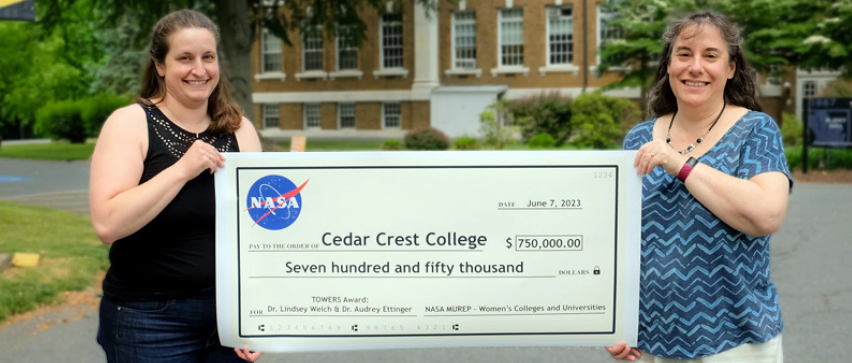ALLENTOWN, Pa. — Audrey J. Ettinger, associate professor of biology and chair of Cedar Crest College’s Department of Biological Sciences, emphasizes that there is no empirical evidence suggesting women are any less qualified to excel in scientific fields. However, societal conditioning from an early age often steers girls away from math and engineering, reinforcing gender stereotypes.

Ettinger, alongside Lindsey A. Welch, an associate professor of chemistry at Cedar Crest, is actively addressing this science gender gap. Recently, the dynamic duo secured a $750,000 grant from NASA spanning three years. The grant positions Cedar Crest College among seven institutions receiving such funding.
Their mission is clear: foster a more inclusive and equitable environment for women in STEM (science, technology, engineering, and math). Through a multifaceted approach encompassing research, mentorship, and faculty/staff development, they aim to boost confidence among women contemplating STEM careers.
Welch underscores the significance of representation in retaining women in STEM, particularly in women’s colleges and universities. These institutions often offer more female mentors and role models, a critical factor in empowering and encouraging women in the pursuit of scientific careers.
Reflecting on her own experiences, Welch stresses the scarcity of female science faculty during her academic journey. She highlights the pivotal role that female representation plays in retaining women in STEM fields, emphasizing its crucial importance for aspiring female scientists.
Data: Women in STEM
Approximately 25% of the U.S. workforce is currently engaged in STEM (science, technology, engineering, and mathematics) jobs, as reported by the National Science Foundation. This percentage is on an upward trajectory.
According to the foundation’s report, titled “The STEM Workforce,” the STEM workforce expanded by 5.9 million individuals between 2011 and 2021, surging from 29 million to 34.9 million—a notable 20% increase. The proportion of STEM workers in relation to the overall workforce also rose from 21% in 2011 to 24% in 2021.
Despite the existing gender disparity, with nearly twice as many men as women in STEM occupations, data indicates that the number of women entering these fields is growing at a comparatively rapid pace.
“While the number of women working in STEM occupations is fewer than men, their representation in the STEM workforce increased at an accelerated rate,” notes the foundation. Over the period from 2011 to 2021, the number of women in the STEM workforce saw a 31% surge, climbing from 9.4 million to 12.3 million. In contrast, the number of men employed in STEM occupations in 2021 was 22.6 million, reflecting a 15% increase from the 19.7 million recorded in 2011.
Source: lehighvalleynews



















Leave a Reply